Bone-conduction headphones allow cyclists to hear traffic noise while listening to music
Graduate shows 2015: these headphones by Royal College of Art graduate Gemma Roper clip to a cycling helmet and play music through the wearer's cheekbones so they are still able to listen out for vehicles (+ movie).
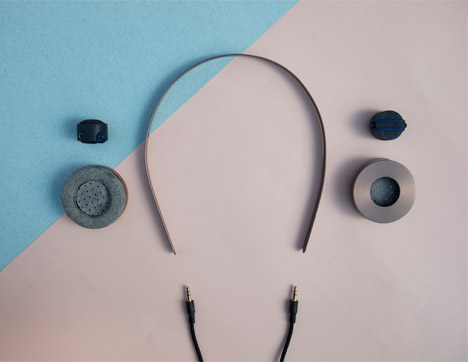
Roper, who studied on the RCA's Design Products course, created the Safe+Sound headphones after noticing a large number of cyclists wearing earphones while travelling on London's busy roads.
"Eliminating your sense of hearing puts you and others around you at enormous risk," she said. "Yet I can completely understand the desire to move to music."
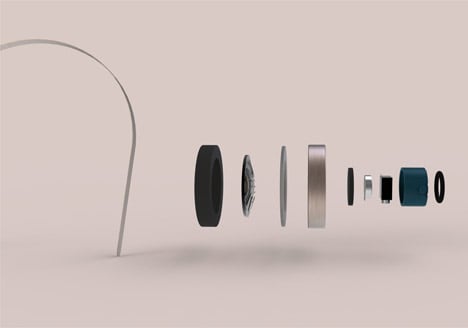
Her solution was to design a pair of headphones that transmit vibrations through the wearer's cheekbones to the inner ear, which adds a layer of sound rather than blocking out other noises.
"I would compare it to being in a room where music is playing through a speaker," said Roper.
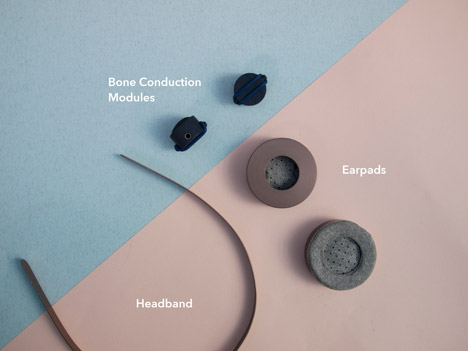
This frees up the eardrum to pick up sounds from approaching or passing vehicles, as well as other potential obstacles – working in the same way as headsets designed to help blind people navigate cities.
"The volume of sound when you're cycling is not loud enough to drown out the external noise; external noise will take precedence, which is pivotal," Roper said.
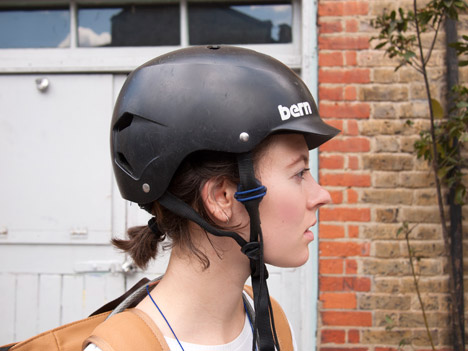
Two bone-conduction transducers, which convert electricity into vibrations, are each placed beneath a neoprene pad that is porous enough to transfer the sound. These modules attach to the straps of cycling helmets with silicone clasps modelled on removable bike lights, and are positioned to sit on the wearer's cheekbone.
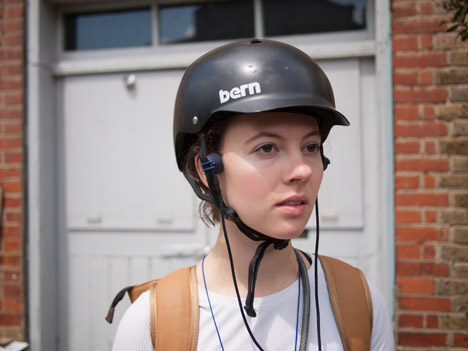
"Bone-conduction headphones already exist but they are targeted at a tech market and are pretty unattractive in comparison with other headphones that are often seen as a status symbol," Roper said.
Initially made as a prototype for her own use, Roper developed the model by taking apart and rewiring existing pairs of bone-conducting headphones with "very little aesthetic appeal".
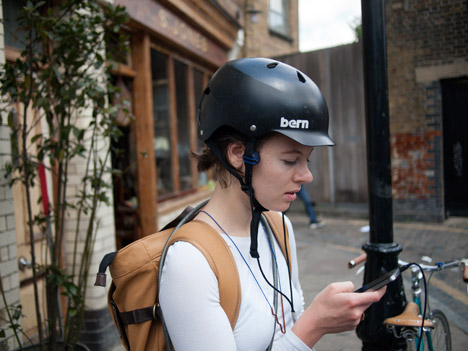
Her aim was to create a set that were both stylish and safe for cyclists, and that could also be used as a more conventional over-ear design once the wearer has dismounted their bike.
"There seemed to be an opportunity to combine the two and design a pair that was suitable for these two environments," said Roper.
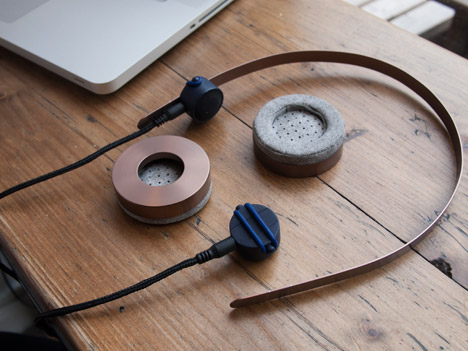
The modules can be popped into aluminium cases, using the silicone straps to attach them to a headband and allow them to be adjusted up and down.
Although adequate volume is provided through bone conduction, Roper admitted that the sound quality of the headphones when worn over the ears still needs further development.
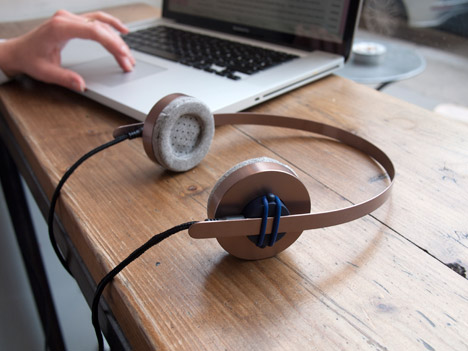
"I would like to work with an audio engineer to refine the type of speaker membrane that would resonate sound from the bone conductor," she said. "I think that with better quality components the sound could be improved dramatically."
Roper's ambition to create both style- and safety-oriented cycling accessories is a sentiment shared with other designers, who have created reflective fabrics, high-vis garments and waterproof attire – all aimed at urban cyclists.
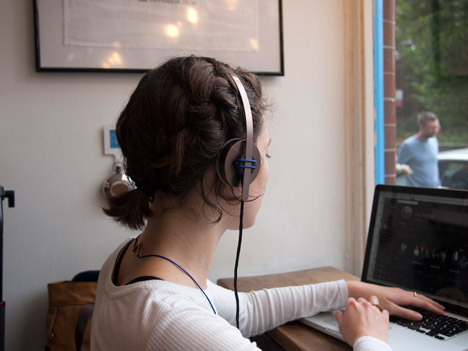
"Products concerned with improving safety often compromise on their aesthetic," said Roper, "but it seems to me that if you want people to adopt something that will improve their safety it needs to be aesthetically pleasing and desirable, otherwise they won't want to use it."
The headphones were presented at this year's Show RCA graduate exhibition in London, which took place from 25 June to 5 July 2015, along with projects that included a personal tattoo machine and a staircase that straps to tree trunks.